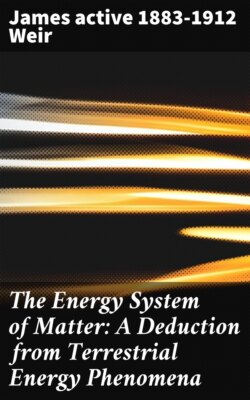Читать книгу The Energy System of Matter: A Deduction from Terrestrial Energy Phenomena - active 1883-1912 James Weir - Страница 13
На сайте Литреса книга снята с продажи.
7. Limit of Gravitation Transformation
ОглавлениеTable of Contents
In the case of a planetary body, there is a real limit to the extent of the transformation of its orbital energy of motion under the influence of the gravitation field. As the orbit of the planet widens, and its mean distance from the primary becomes greater, its velocity in its orbital path must correspondingly decrease. As already pointed out (§ 5), this decrease is simply the result of the orbital energy of motion being transformed or worked down into energy of position. But since this orbital energy is strictly limited in amount, a point must ultimately be reached where it would be transformed in its entirety into energy of position. When this limiting condition is attained, the planet clearly could have no orbital motion; it would be instantaneously at rest in somewhat the same way as a projectile from the earth's surface is at rest at the summit of its flight in virtue of the complete transformation of its energy of motion into energy of position. In this limiting condition, also, the energy of position of the planet would be the maximum possible, and its orbital energy zero. The scope of the planetary orbital path is thus rigidly determined by the planetary energy properties. Assuming the reduction of gravity with distance to follow the usual law of inverse squares, the value of the displacement of the planet from the central axis when in this stationary or limiting position may be readily calculated if the various constants are known. In any given case it is obvious that this limiting displacement must be a finite quantity, since the planetary orbital energy which is being worked down is itself finite in amount.
